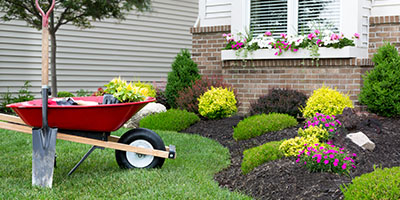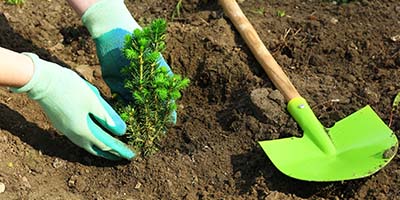How to Companion Plant for a Healthier Vegetable Garden

A Guide to Companion Planting
If you’ve ever planted a garden, you’ve probably wondered what to plant next to each other, and if certain plants do better with others. Enter: companion planting.
What Is Companion Planting?
Companion planting is the practice of strategically placing vegetables or herbs next to one another to organically encourage growth, prevent pests or promote pollination.
“Companion planting is in contrast to monocropping,” says the University of Arizona’s Moses Thompson, coordinator of the college's Community and School Garden Program. “Instead of just planting one species in an area, companion planting allows different plants to help each other out. It’s an organic way to control pests and preserve soil health.”
We’ve broken down the top 10 vegetable and herb companion planting charts – including expert tips for what not to plant next to each other – so you can keep your plants thriving naturally.
10 Popular Companion Plants for Your Vegetable and Herb Garden
1. Tomatoes
Tomatoes are a classic garden staple, but their soft fruits make them vulnerable to a number of pests and diseases. Thankfully, tomatoes can get by with a little help from their friends. Use these companion planting suggestions to repel bugs and encourage your tomatoes to grow:
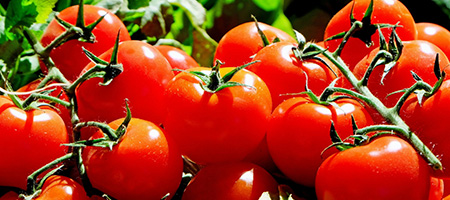
Companion Planting List for Tomatoes:
What to Plant Next to Tomatoes | Why? |
|---|---|
Basil | Repels flies and tomato worms; improves tomatoes’ flavor |
Asparagus and Marigolds | Repels nematodes |
Borage | Encourages growth; repels tomato worms |
Chives | Repels aphids |
Garlic | Repels spider mites |
What Not to Plant Next to Tomatoes | Why? |
|---|---|
Broccoli and Cauliflower | Stunts tomato growth |
Strawberries | Can spread diseases to tomatoes |
Potatoes | Can cause blight fungus on tomatoes |
Chives | Repels aphids |
Walnuts | Walnut trees produce jugalone, which can stunt tomato growth |
Corn | Attracts tomato-hungry pests; blocks out sun for tomatoes |
Dill | Mature dill can crowd out resources for tomatoes |

Why keep certain plants apart in the garden?
“Certain pests and diseases are drawn to similar crops and best practice would be to keep those crops separate to avoid losing your whole harvest. Crops like potatoes and tomatoes can get the same blights, while corn and tomatoes are especially tasty to the same worms.”
John Harrison | Espoma
2. Asparagus
One of the first crops to be harvested in spring, asparagus is a vitamin-rich, robust plant that can tolerate both cold and hot weather extremes. To give your shoots an added boost, try planting a few of these companion plants for asparagus:
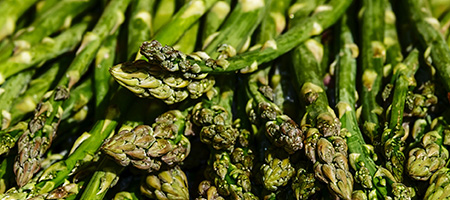
Companion Planting List for Asparagus:
What to Plant Next to Asparagus | Why? |
|---|---|
Beans & Peas | Repels asparagus beetles |
Corn | Repels spider mites |
Mint | Different root depths |
Spinach | Encourages growth |
Borage | Repels aphids |
What Not to Plant Next to Asparagus | Why? |
|---|---|
Garlic and Onions | Can stunt asparagus growth |
Potatoes | Competes for the same nutrients |
Corn | Attracts army worms |
3. Zucchini
Zucchini is a fast-growing squash plant that does well in most gardens. However, it is fairly vulnerable to a few pests, so here are a few companion plants for zucchini that will keep it safe and healthy.
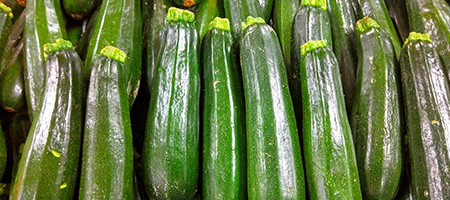
Companion Planting List for Zucchini:
What to Plant Next to Zucchini | Why? |
|---|---|
Beans & Peas | Both release helpful nitrogen into the soil |
Corn | Repels squash vine borers |
Mint | Repels aphids |
Spinach | Spinach leaves provide nutrients for zucchini |
Borage | Attracts bees, which pollinate zucchini |
What Not to Plant Next to Zucchini | Why? |
|---|---|
Potatoes | Can stunt zucchini growth |
Broccoli | Competes for zucchini’s nutrients |
Pumpkins | Can cross-pollinate, creating low-quality fruit |
4. Melons
When companion planting melons, you won’t run into many issues as they get along with most other vegetables and herbs. But because pests tend to love them, they really love to be near plants that can keep the bugs away. Check out this companion planting chart to find a few good partners for melons.
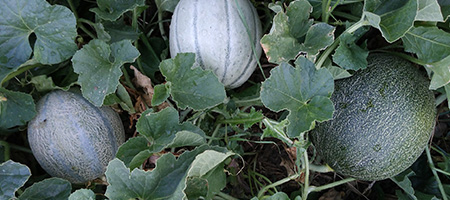
Companion Planting List for Melons:
What to Plant Next to Melons | Why? |
|---|---|
Catnip | Repels flies and aphids |
Radishes & Lettuce | Harvested before melon vines spread |
Beans & Corn | Provides shade for melons |
Marigolds | Repels beetles |
Tansy | Repels flies and beetles |
What Not to Plant Next to Melons | Why? |
|---|---|
Squash | Can cross-pollinate, creating low-quality fruit |
Potatoes | Can stunt melon growth |
5. Broccoli
Love it or hate it – for most people, there’s no in-between with broccoli. Turns out, lots of plants feel the same way. Broccoli and other members of the brassica family are considered "heavy feeders," which means they absorb a lot of calcium and tend to crowd out other plants that have similar needs, including their own kind. However, there are a few companion plants that benefit from broccoli’s company:
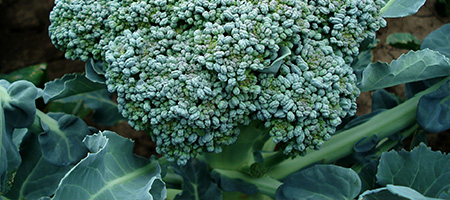
Companion Planting List for Broccoli:
What to Plant Next to Broccoli | Why? |
|---|---|
Celery | Repels cabbage flies, which damage broccoli |
Onions | Improves flavor of broccoli |
Garlic | Repels beetles and can improve broccoli flavor |
Beets | Balances out broccoli’s calcium requirements |
Nasturtiums | Repels a number of pests; balances broccoli’s calcium requirements |
What Not to Plant Next to Broccoli | Why? |
|---|---|
Cauliflower & Cabbage | Competes for broccoli's nutrients |
Asparagus | Both plants are "heavy feeders", which can deplete the soil |
Pole Beans & Strawberries | Can stunt broccoli growth |

Companion Planting Tip: For Better Pest Control, Avoid Planting in Rows
“It has been shown that intermingling herbs and different vegetable plants rather than planting row-type gardens can help protect your plants from attack by harmful insects. Insects have a harder time destroying or damaging one crop if the same type of plants are not planted right next to each other.”
Cindy Meredith | The Herb Cottage
6. Spinach
This delicious, leafy green gets along with almost every garden vegetable, so you shouldn’t run into many issues when companion planting spinach. However, it is a heavy feeder like broccoli, so try to keep it away from other calcium-hungry plants.
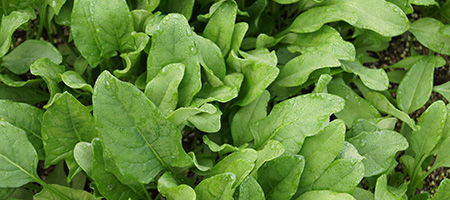
Companion Planting List for Spinach:
What to Plant Next to Spinach | Why? |
|---|---|
Tansy | Repels cutworms |
Cilantro | Repels aphids |
Beets & Chard | Similar soil pH requirements |
Dill | Repels spider mites |
Corn and Beans | Provides shade, which prevents spinach from tasting bitter |
Radishes | Repels leaf miners |
What Not to Plant Next to Spinach | Why? |
|---|---|
Potatoes | Competes for spinach's nutrients |
7. Peas
Peas are a pest-hardy, easy-to-maintain plant for almost any garden. Like beans, peas are good companion plants for many other vegetables because they release nitrogen into the surrounding soil, which improves plant growth. But if you’re looking for a few plants that will scratch their back too, here are a few tips for companion planting peas:
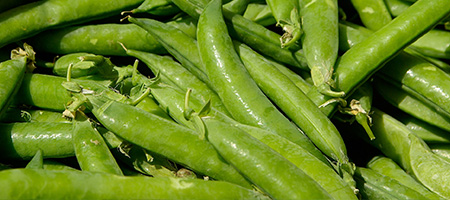
Companion Planting List for Peas:
What to Plant Next to Peas | Why? |
|---|---|
Beans | Increases nitrogen in soil |
Carrots & Cucumbers | Encourages pea growth |
Dill | Repels spider mites |
Radishes | Repels leaf miners and beetles |
Asparagus & Marigolds | Repels nematodes |
What Not to Plant Next to Peas | Why? |
|---|---|
Onions, Leeks & Garlic | Stunts the growth of peas |
8. Onions
Onions are the white knights of the garden, repelling everything from aphids to carrot flies for their fellow veggies. However, not every plant in your garden will appreciate their help. Here are a few ways to successfully companion plant with onions:
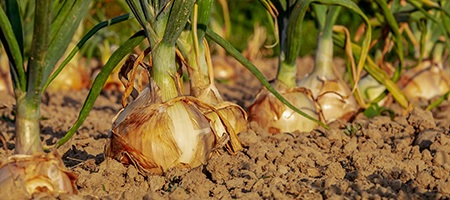
Companion Planting List for Onions:
What to Plant Next to Onions | Why? |
|---|---|
Carrots | Different root depths |
Chamomile | Improves onions' flavor |
Leeks | Repels onion flies |
Cabbage & Kale | Onions repel pests for these plants |
What Not to Plant Next to Onions | Why? |
|---|---|
Peas, Asparagus, Sage & Beans | Can stunt onion growth and vice versa |

Companion Planting Tip: Think About Root Depths When Planting
"[For example], you can grow lettuce, tomatoes and carrots together in tight spaces. Lettuce has shallow roots, tomatoes have medium roots and carrots are a deep root vegetable, so they will not have to compete for the same space."
John Harrison | Espoma
9. Corn
The Three Sisters trio is probably the most famous companion planting combination and is comprised of dry beans, winter squash and corn. A strategy dating back to early Native American agriculture practices, the Three Sisters work together to protect and nourish one another, improving yields for each plant. But those aren’t the only plants corn can befriend in your garden.
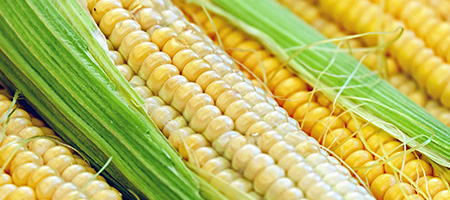
Companion Planting List for Corn:
What to Plant Next to Corn | Why? |
|---|---|
Winter Squash | Large squash leaves shade the soil, keeping it cool for corn roots |
Dry Beans | Corn loves the nitrogen produced by bean growth |
Sunflowers | Sunflowers can increase corn yields |
Cucumbers | Cucumbers promote corn growth and can also increase yields |
What Not to Plant Next to Corn | Why? |
|---|---|
Tomatoes, Eggplant & Basil | Corn can block out sunlight for these plants |
10. Potatoes
Potatoes are hardy, deep-rooted vegetables that are extremely easy to grow. However, they are also a fan favorite of beetles and aphids, so here are a few helpful vegetable companion plants to keep around your garden’s spuds.
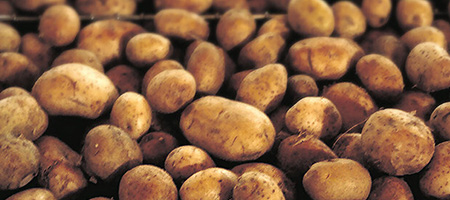
Companion Planting List for Potatoes:
What to Plant Next to Potatoes | Why? |
|---|---|
Beans | Releases nitrogen into soil for potatoes |
Eggplant | Doesn’t compete with potatoes for sunlight |
Catnip | Repels the Colorado potato beetle |
Peppermint | Repels flea beetles which feed on potatoes |
Petunias | Repels aphids |
What Not to Plant Next to Potatoes | Why? |
|---|---|
Carrots | Carrot roots compete with potatoes |
Raspberries, Tomatoes, Cucumbers & Squash | Make potatoes susceptible to blight |

Companion Planting Tip: Use Companion Planting as a Teaching Opportunity
"Companion planting lends itself well to teaching kids about the benefits of biodiversity and the principles of ecology, where everything within a system effect another part of the system. When you have healthy biodiversity, it makes a system more stable. And that’s a concept that we can teach on a microscale through companion planting."
Moses Thompson | CSGP Coordinator | University of Arizona

